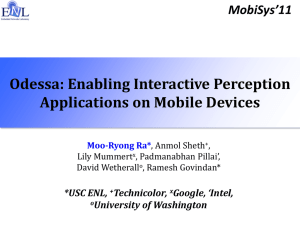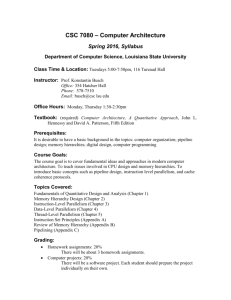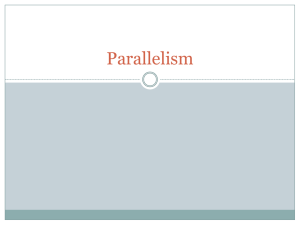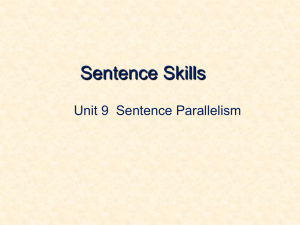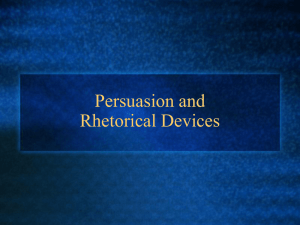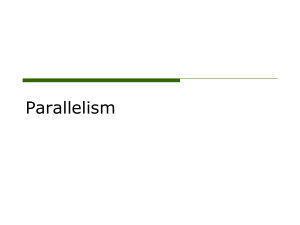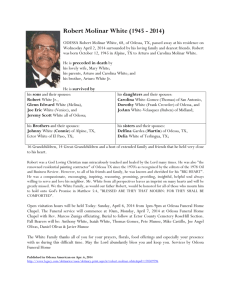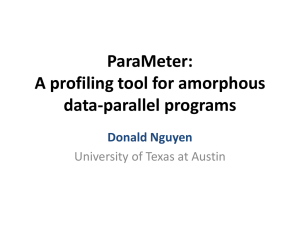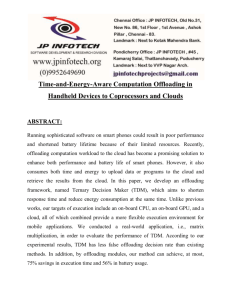Is There Research in Smartphone-Based Systems?
advertisement
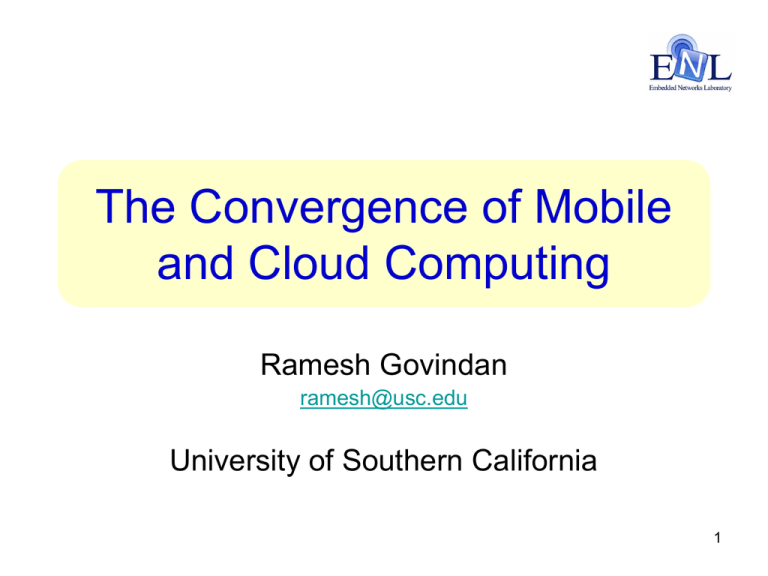
The Convergence of Mobile and Cloud Computing Ramesh Govindan ramesh@usc.edu University of Southern California 1 A Seductive Question… The Cloud When 4 billion smartphones are Internet-connected, how (if at all) Network should theFabric Internet architecture change? 2 Bridging the Capability Gap As the Smartphone becomes the primary computing device… Capability What users will want What the device is capable of Time 3 Bridging the Capability Gap Dealing with Constraints Energy-Delay Tradeoffs in a Video Documentation System Overcoming Constraints Toward Cloud-Assisted Interactive Mobile Perception 4 Energy Constraint Battery Life is an issue for Usability Intelligently use peripherals and sensors to reduce energy consumption Opportunity: Multiple peripherals and sensors 5 The Urban Tomography System Video Collection 10 years ago Video Collectio n Today M. Ra, J. Paek, A. Sharma, R. Govindan, M. Krieger, M. Neely, “Energy-Delay Tradeoffs in Smartphone Applications”, ACM Mobisys 2010. Users Transportation Post-Disaster Security Urban Planning Documenting Post-Katrina Reconstruction Leveraging Delay-Tolerance Planning Research Many But tolerance of our users varies are considerably delay-tolerant Transportation Security Delay-Tolerance Dealing with Child development Issues Data-Intensive, Delay-Tolerant Applications Video Data-Intensive Sensing Download Context Prefetching Audio . Large Database. Delay-Tolerant • Large Database (e.g. WPS) • Maps • Media Application Participator y Sensing Upload • Monitoring Personal resources • Dietary Habits • Urban Documentation Our Focus Transferring Large Volumes of Data Leverage Delay Tolerance Reduce the energy cost Trade-offs EDGE/3G WiFi Energy (J/bit) HIGH LOW Availability HIGH Channel Quality Delay transmission LOW Adapt to wireless Time-Varying Time-Varying channel quality A Motivating Example EDGE 3G WiFi video 1 arrives 200 KB/s video 2 arrives 40 KB/s 50 KB/s 10 KB/s TIME Strawman Approaches Energy-Optimal Min-Delay WiFi-Only EDGE 3G WiFi Optimal can save significant energy video 2 video 1 TIME 246 J sec Challenge: How 95 Energy 305 320 to design Delay the optimal trade-off algorithm? 50 MD ME EO Motivation 242 MD ME EO Problem Solutions Approach Evaluation Conclusion SALSA Whether, When, Which SALSA Delayed Transmission Tunable Delay-Tolerance Main Results Ignorequeue link quality Ignore backlog Since SALSA takes all factors into account, it performs closest to the optimal Min-Delay WiFi-only Static-Delay Know-WiFi SALSA The Bottom Line Save 2% ~ 80% of Gain? battery capacity + 2 min ~ Loss? 2 hour Battery Energy Savings Additional Delay Bridging the Capability Gap Dealing with Constraints Energy-Delay Tradeoffs in a Video Documentation System Overcoming Constraints Toward Cloud-Assisted Interactive Mobile Perception 23 Interactive Mobile Perception Advent of Inference Technology • Computer Vision • Language Translation • Natural language processing, etc. Rich Sensors and Smart Mobile Devices • Perception application is very relevant for mobile devices. • Smartphone technology • High data rate sensors - Interactive. (low latency 10 ~ 100ms) - High data rate. (media data) - Computationally Intensive. (ML/Vision-based algorithms) M. Ra, A. Sheth, L. Mummert, P. Pillai, D. Wetherall, Odessa: Enabling Interactive Perception Applications on Mobile Devices, ACM MobiSys 2011 Challenge Constraint Many perception applications require significant compute power Overcoming the constraint Offload computation to the “cloud” Offloading decision is non-trivial, since wireless network bandwidth is also constrained 26 Odessa A system that automatically and dynamically offloads components of a perception data-flow to the cloud 27 Applications Face Recognition Gesture Recognition Pose Estimation 29 Odessa Goals and Techniques High Throughput (frames per second) Low Latency (time to process a single frame) Offloading Parallelism Motivation: Offloading Variability on different devices Offloading decision should be adaptive. A static decision may not work. Variable on Inputs for Face Recognition Variability on network conditions Parallelism Throughput Makespan 1. Data Parallelism Frame 1 2. Pipeline Parallelism Frame 3 Frame 2 Throughput Frame 1 Frame 1 Frame 2 Frame 3 Motivation: Data Parallelism Accuracy time of face detection stage The leveland of execution data parallelism affects accuracy recognition) and (face performance much, and it should consider precedence partition. Avg. execution time of SIFT feature extraction stage. (object and pose recognition) Motivation: Pipelining A static choice of pipeline parallelism can lead to suboptimal makespan or leave the pipeline underutilized. - Desirable # of tokens may be different. - How do we even know right # of tokens a priori? Odessa Design Lightweight Application Profiler Uses statistics from application pipeline to make decisions Decision Engine Adapts data parallelism and stage offloading. Adapts pipeline parallelism Profiler Start Stage Report Decision Engine Stage Piggybacking Lightweight Suppress duplicated information Cycles, Parallel Stages Stage Stage Stage Stage Stage Report statistics to the decision engine per frame Decision Engine Pick a Bottleneck Stage (Start Point) Compute Stage? No Incremental Algorithm Bottleneck is Network Edge Yes Estimate Necessary Costs Choose the Best Choice; Offload, Spawn or Do nothing. Consider data parallelism and stage offloading simultaneously Evaluation Throughput Odessa finds an optimal configuration automatically. Makespan Comparison FPS: Higher is better Makespan: Lower is better Odessa shows 3x improvement over competing strategies Convergence Interesting research opportunities at the boundary between mobile and cloud computing 40
